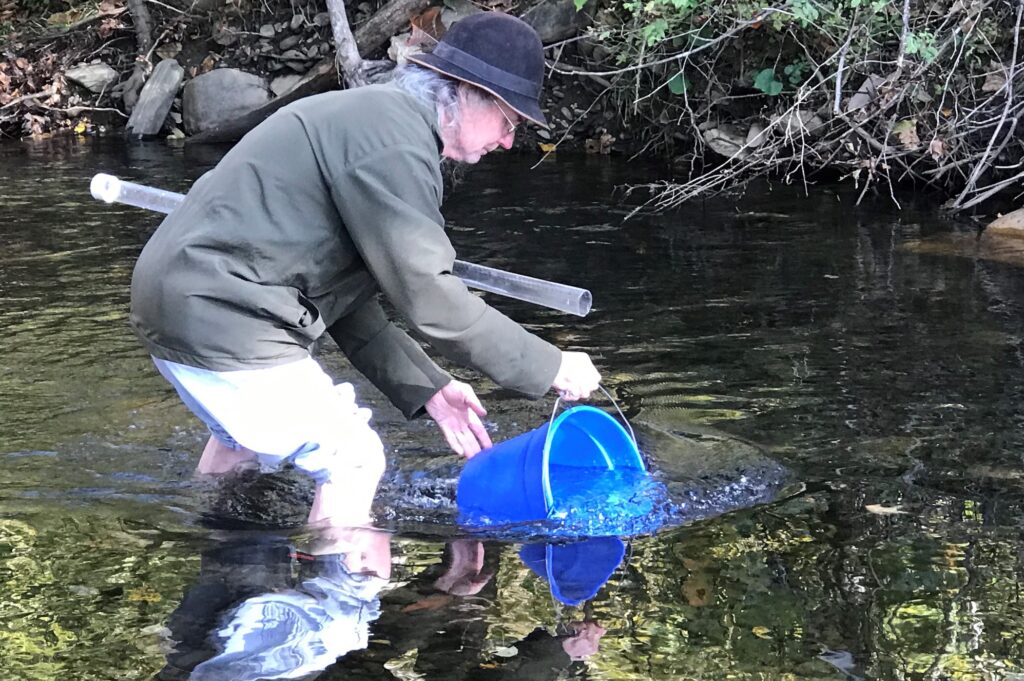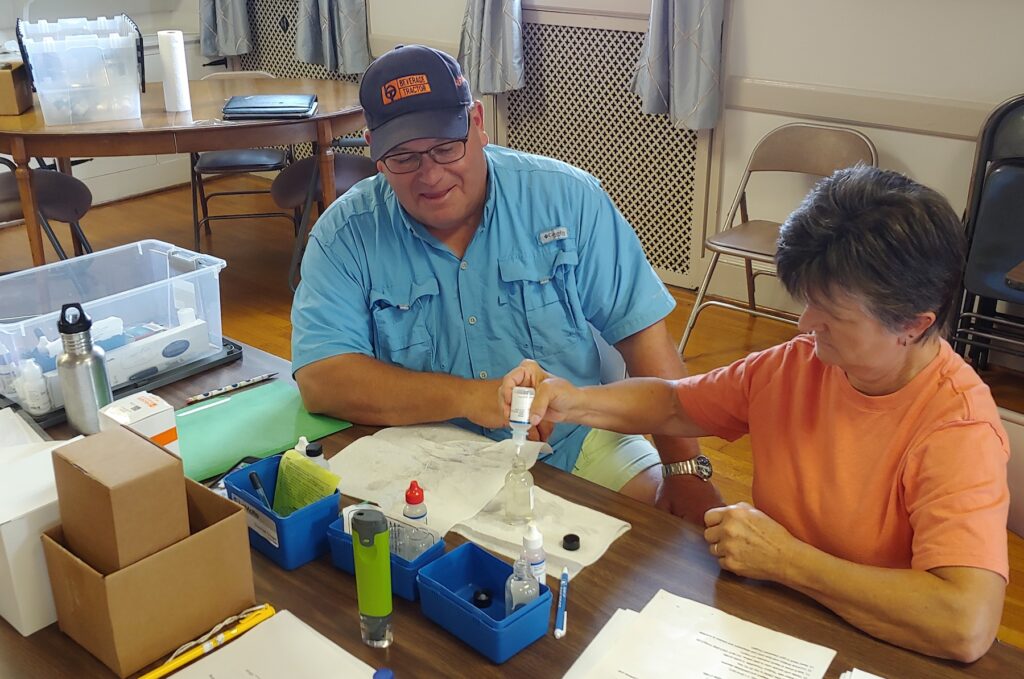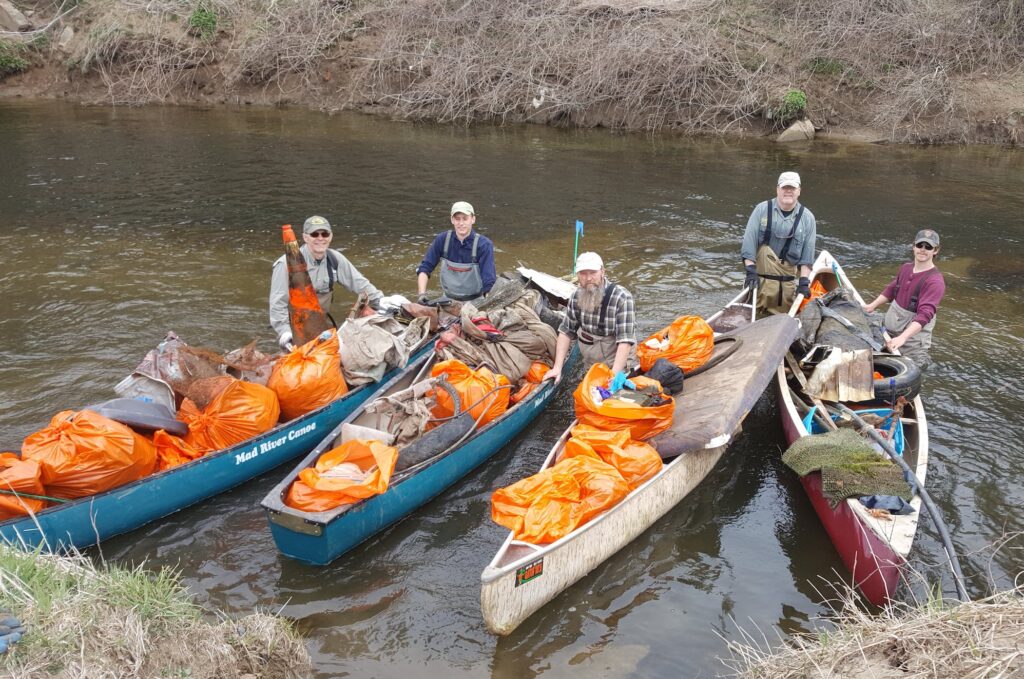By Luna Fulguiero Fuchs
As an Intern for the Virginia Water Resources Research Center, I wanted to learn about and share information for volunteer opportunities for watershed conservation with the New River Conservancy. I interviewed John Copeland, a Land and Water Quality Manager at the New River Conservancy, where he manages conservation easements and the Water Watchers Volunteer program.
The New River Conservancy is an organization whose mission is to protect “the waters, woodland, and wildlife of the New River Watershed.” The New River Conservancy has three strategic priorities to achieve their mission: understanding water quality, protecting and restoring the land, and keeping the river clean.
The New River is a 320-mile-long river and only one of 14 American Heritage Rivers nationally. The New River Conservancy was started by a group of citizens that got involved in stopping a hydroelectric dam project in Grayson County, Virginia, and Allegheny and Ashe Counties, North Carolina. They did this by bringing in political pressure, and got the South Fork of the New River designated as a National Wild and Scenic River, which stopped the hydroelectric dam construction.
The New River Conservancy has volunteer opportunities in a number of different areas including water quality, protection, restoration, and river clean-ups, spanning from Virginia to North Carolina. I will cover some of the biggest opportunities below.

Ways to Volunteer – New River Water Watchers
Would you like to actively help with monitoring water quality in your local streams and rivers? The New River Conservancy has the New River Water Watchers program. This program allows citizens of Virginia and North Carolina to help monitor local streams and rivers and allows for more data collection. The more data are collected, the easier it is to keep these streams monitored and up to quality standards.
According to John Copeland, “having a good volunteer water quality monitoring network helps to cover some of the water quality monitoring concerns.” State environmental quality agencies have water quality monitoring networks, and the New River Conservancy uses volunteers to fill in gaps in those networks.
Water Watcher volunteers are trained to collect data on parameters such as temperature, dissolved oxygen, pH, turbidity, conductivity, and E.coli. The New River Water Watchers dates back to 2008 and has trained over 100 volunteers since 2008. They have monitored over 80 sites in the New River Watershed, and thousands of data points have been collected by volunteers over the years.
The New River Water Watchers requires six hours of training to become a volunteer, with four hours of recertification if you come back again for another year or want to do a multi-year commitment. Volunteers commit to at least a year of monthly data collection, which takes around 3-5 hours a month.

Ways to Volunteer – River Cleanups
River cleanups are great events for people to get involved in cleaning up their local rivers and streams. Trash in rivers can degrade water quality, endanger plants and animals, and interfere with human uses of the river. Since 2001, the New River Conservancy has removed over 458,000 pounds of trash from the New River! Various volunteer opportunities throughout the year involve cleaning streams and rivers. If you are interested in participating in a stream cleanup, Team Clean Stream is the contact point to find out more.

Ways to Volunteer – Streambank Restoration
Streambank restoration stabilizes and repairs stream channels, reduces erosion, and restores aquatic ecosystems. New River Conservancy works on streambank restoration with its River Builder program, a riparian buffer restoration program. River Builder is a live stake giveaway. Live stakes are branches that are cut from a native woody shrub or tree and that can be planted directly into the soil. Example species are silky dogwood, silky willow, elderberry, and black willow. Participants plant live stakes on their riverfronts and streams to restore riparian areas and help improve water quality from erosion and runoff. As these plants grow and mature, they will filter surface runoff, prevent streambank erosion, and provide habitat for native wildlife.
Conclusion
The New River Conservancy is doing a lot of good work to conserve the beautiful natural resource that is the New River. There are many volunteer opportunities that anyone can be a part of. From being a volunteer water quality monitor, to helping out with river cleanups and even conserving your own land near the New River, you can help the communities that are surrounded by this amazing watershed. Please check out the New River Conservancy online and see how you can help out!
